- A Closer Look at How SORA Works
- Factors Affecting Sora-like Platform Development Cost
- Core Technology
- Machine Learning Models
- Data Acquisition and Training
- User Interface and Experience (UI/UX)
- Regulatory Compliance and Security
- Development and Scalability
- Integration and Compatibility
- Features and Functionalities
- Development Team Location
- Essential Features of a Text-toVideo Generator like Sora
- Use Cases and Benefits of Text-to-Video Generator Platforms like Sora
- Educational Content Creation
- Training and Communication
- Product Reviews and Demonstration
- Real Estate Presentations
- Customer Support and Satisfaction
- Marketing and Promotion
- How to Develop a Text-to-Video Generator Platform like Sora?
- Defining Objectives
- Research and Analysis
- Data Collection
- Data Preparation
- AI Model Development
- UI/UX Design
- Development
- Quality Assurance and Testing
- Regular Updates and Maintenance
- 8 Real-World Examples of AI Video Generators like Sora
- How to Make Money with a Text-to-Video Generator like Sora?
- Subscription Model
- Pay-Per-Use Model
- Advertisements and Sponsorships
- White-Label Solutions
- Develop a Text-to-Video Platform like SORA with Appinventiv
- FAQs
In today’s digital era where video content reigns supreme, the demand for innovative tools that can streamline the video creation process is ever-growing. One such groundbreaking tool that is revolutionizing the way we produce videos, offering a seamless transition from written content to visual presentations, is OpenAI’s newly launched Sora.
Imagine your text coming to life in realistic videos—that too in a matter of seconds. Sounds interesting? This is exactly what the text-to-video generator, OpenAI Sora, does. Developed on 15th Feb 2024, Sora is a generative AI model that can transform text prompts into high-quality videos of up to 60 seconds featuring highly detailed scenes with multiple characters, vibrant emotions, complex camera motion, and more.
For instance, if you want to create a video of people enjoying the beautiful snowy weather and shopping in the bustling streets of Tokyo, the resulting video would look like this:
However, the complete prompt given as a text to Sora was: “Beautiful, snowy Tokyo city is bustling. The camera moves through the bustling city street, following several people enjoying the beautiful snowy weather and shopping at nearby stalls. Gorgeous Sakura petals are flying through the wind along with snowflakes.”
According to MarketsAndMarkets, the text-to-video AI market was valued at $0.1 billion in 2022 and is expected to reach $0.9 billion by 2027, growing at a CAGR of 37.1% during the forecast period.
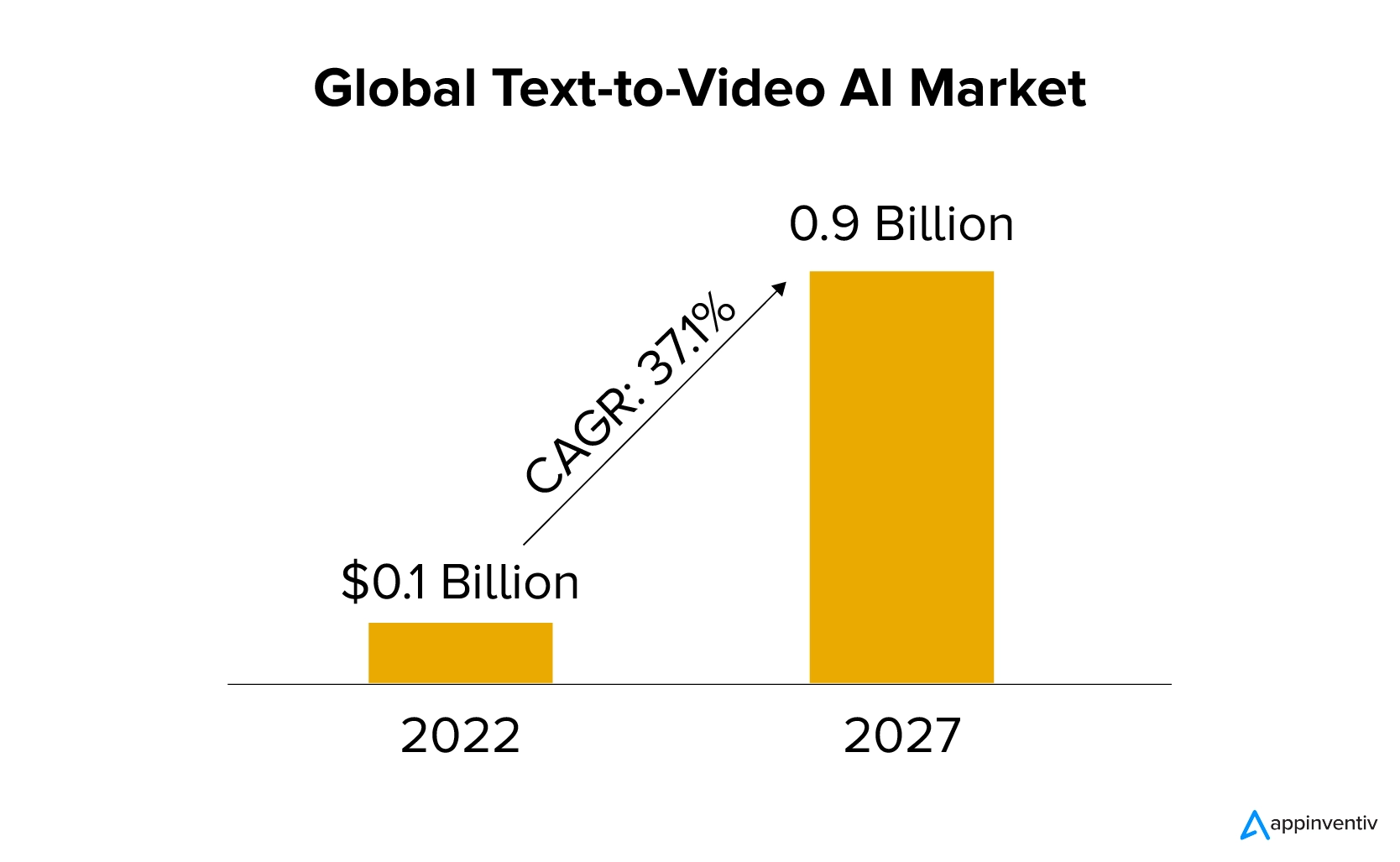
This exponential market growth contributes to the widespread adoption and development of Sora-like platforms by both startups and enterprises. Businesses integrate text-to-video generator tools into their operational processes to cater to the ever-evolving demands of their audience and stay ahead of the competition. Video content helps companies increase SERPs, website traffic, conversion rates, brand awareness, and productivity.
Accordingly, businesses across industries increasingly estimate the cost to develop an AI platform like Sora. While it is challenging to provide an exact figure for the Sora platform development cost, it typically ranges between $30,000 and $300,000 or more, depending on various factors (details later).
In this blog, we will explore the various factors influencing the cost to build an AI platform like Sora and provide valuable insights into other crucial aspects like its use cases, development process, features, benefits, and more.
A Closer Look at How SORA Works
Sora operates on cutting-edge AI technology, particularly leveraging natural language processing (NLP) and computer vision algorithms. For instance, Sora ingests textual input provided by users and then employs NLP algorithms to understand and extract key information from the text. Subsequently, it utilizes computer vision techniques to generate corresponding video content, incorporating relevant visuals, animations, and transitions to bring the text to life in video format.
At its core, Sora works on a two-pronged approach: Diffusion Model and Transformer Architecture:
- Diffusion Model: Sora employs a diffusion model similar to DALL-E 3, refining random noise iteratively based on text prompts to generate visuals.
- Transformer Architecture: Inspired by generative AI models like ChatGPT, Sora utilizes a transformer architecture, enabling it to understand complex connections between text and visual elements.
While Sora is all set to bring transformational change in the video creation process, it also faces limitations such as reliance on textual input, which may hinder the accurate representation of complex concepts. Additionally, interpreting ambiguous language may lead to potential inaccuracies in the output. Despite these challenges, Sora remains a powerful tool for streamlining video creation processes for businesses across industries.
Factors Affecting Sora-like Platform Development Cost
Developing an AI platform like Sora involves a multifaceted approach encompassing various elements, including NLP, computer vision, machine learning models, infrastructure, and user interface design. Each component contributes to the overall text-to-video generator platform development cost, making it crucial to understand the various factors comprehensively. Here are the key elements that affect the Sora-like platform development cost:
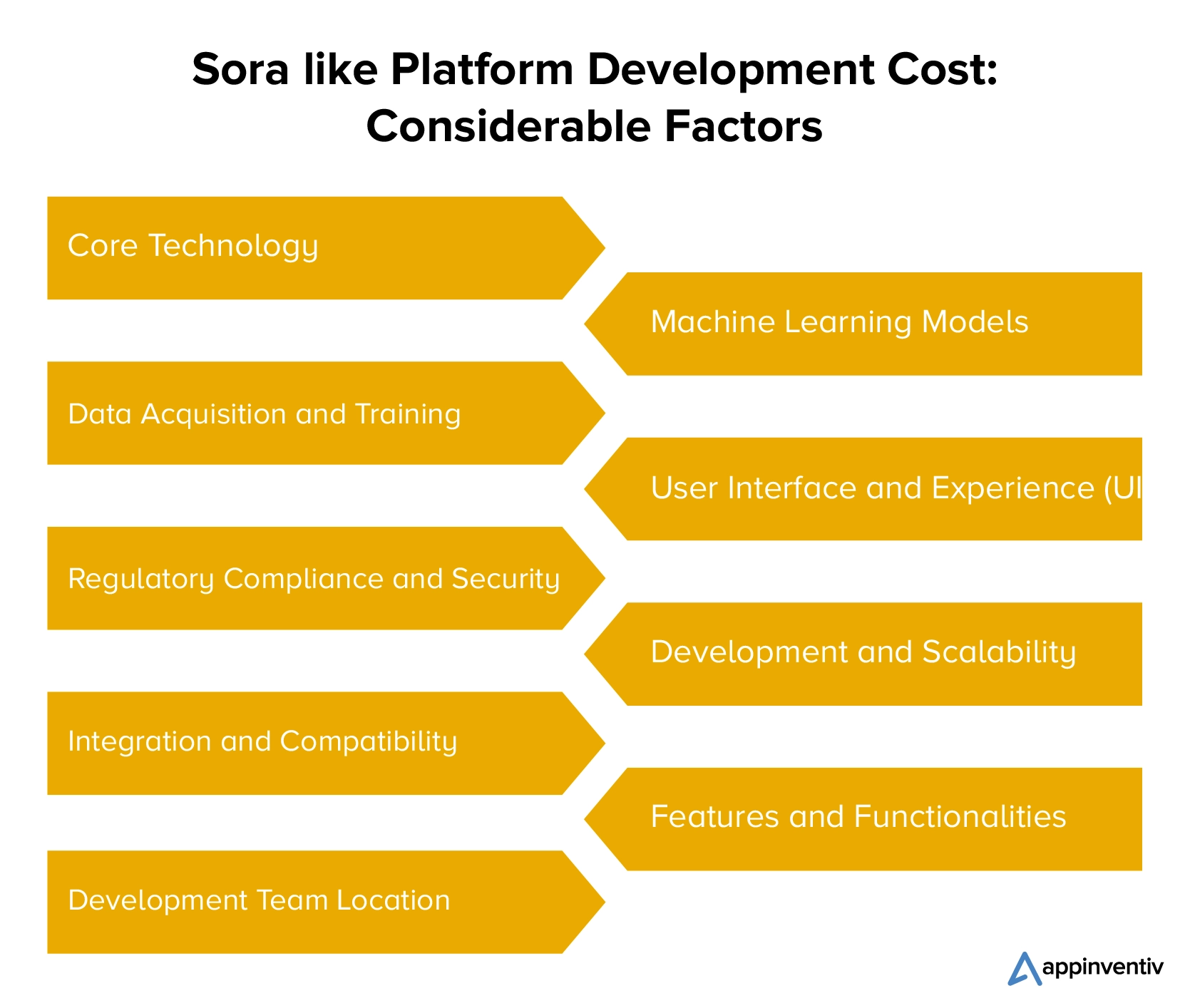
Core Technology
The heart of a text-to-video generator like Sora lies in its underlying technology stack. This includes natural language processing (NLP) algorithms for understanding and parsing text, computer vision techniques for generating and manipulating images and videos, deep learning models for developing realistic visuals, and potentially advanced AI frameworks for synthesis and animation. The development costs associated with these technologies significantly impact the overall text-to-video generator app development costs.
Machine Learning Models
Developing and fine-tuning machine learning models for tasks such as text generation, video synthesis, and semantic understanding demands significant effort and resources, which affects the development cost. Additionally, cloud computing services and platforms like AWS, Azure, or Google Cloud offer scalable infrastructure, but leveraging these services can incur substantial costs.
Data Acquisition and Training
Training an AI model like Sora requires vast amounts of high-quality data. This includes text data for understanding language nuances, as well as image and video datasets for generating visual content. Acquiring and annotating large volumes of text and video data requires substantial investments. Depending on the complexity and scope of the project, it can be a significant factor influencing the text-to-video generator cost.
User Interface and Experience (UI/UX)
A visually appealing and intuitive UI/UX is the lifeblood of any software solution, and a text-to-video app is no exception. Designing an intuitive UI/UX involves user research, wireframing, prototyping, and iterative testing, influencing the text-to-video generator cost.
Regulatory Compliance and Security
Compliance with data protection regulations and ensuring robust security measures are in place is one of the most essential elements to protect user data, which also affects the overall cost to develop an AI platform like Sora. The expense is associated with regulatory compliance audits, implementing encryption protocols, and establishing secure authentication mechanisms.
You may like reading: Compliance management software development costs
Development and Scalability
Building a scalable platform capable of handling increasing business needs and user demand is vital for the long-term success of a video generator app like OpenAI Sora. In addition to development, this involves deploying the application on robust cloud infrastructure, implementing efficient data storage solutions, and optimizing code for scalability, thereby affecting the total text-to-video generator platform development costs.
Integration and Compatibility
Integrating various components and ensuring compatibility with different devices and platforms adds to the Sora-like platform development cost. This includes API integrations for accessing external services, compatibility testing across browsers and devices, and potentially developing mobile applications for broader accessibility.
Features and Functionalities
The complexity and scope of features you want in your text-to-video app will influence the development cost. Integrating the app with external services, such as cloud storage, social media platforms, or payment gateways, adds complexity to the text-to-video app development process, thus increasing cost. Furthermore, features like NLP capabilities, video editing tools, etc., also increase development expenses.
Development Team Location
Selecting the appropriate location for your AI development company can greatly influence both the cost and timeline of your text-to-video generator project. Outsourcing your development team from a location with lower labor costs can effectively reduce expenses. For instance, the labor rate in developed nations such as the US, UK, Australia, or Canada is significantly higher than in countries like India or the UAE.
Here is a brief table demonstrating the cost to develop an AI platform like Sora based on the regions of AI developers.
| hRegion | Hourly Rates of Developers |
|---|---|
| North America | $40–250 |
| Australia | $35–150 |
| Western Europe | $35–180 |
| South America | $25–120 |
| Eastern Europe | $25–110 |
| Asia | $20–80 |
Also read: The cost of developing a chatbot like ChatGPT
Essential Features of a Text-toVideo Generator like Sora
Essential features of a text-to-video generator like Sora encompass a range of functionalities to facilitate seamless content creation. Some of the most common features we should consider when evaluating the text-to-video generator platform development cost include:
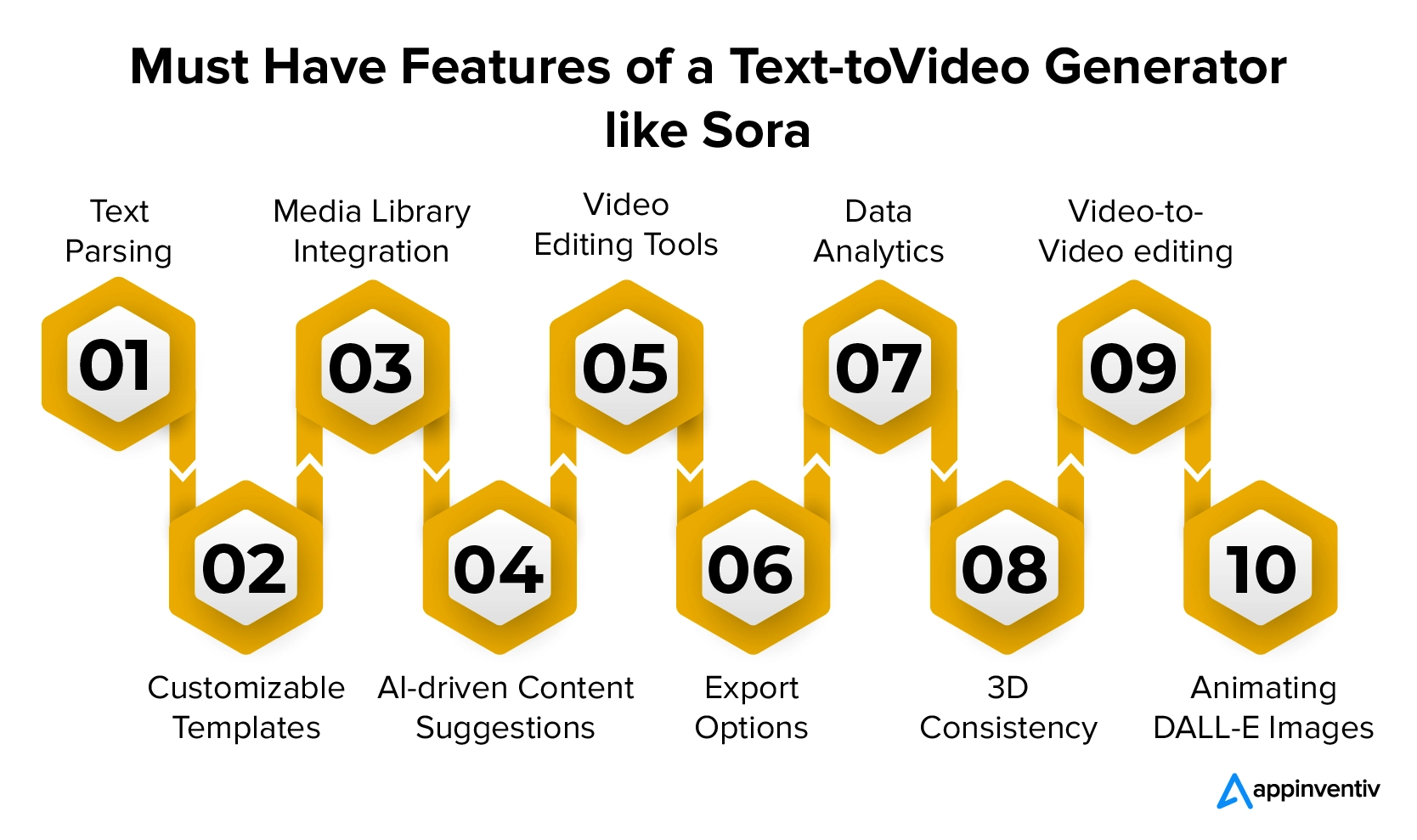
Text Parsing: The ability to process written content and convert it into video format.
Customizable Templates: Versatility in pre-design templates to tailor visuals and layouts to branding and messaging needs.
Media Library Integration: Access to a diverse range of images, videos, and audio clips for enriching video content.
AI-driven Content Suggestions: Automated recommendations for visuals, music, and text styles based on input text to ensure coherence and engagement.
Video Editing Tools: Features for refining creations with trimming, transitions, effects, and other editing functionalities.
Export Options: Ability to save or share generated videos in various formats and platforms for distribution.
Data Analytics: Valuable insights into video engagement metrics such as views, shares, and audience demographics for performance tracking and optimization.
3D Consistency: Sora can generate videos featuring dynamic camera movements, adeptly maneuvering through 3D space to offer varied perspectives of the simulated scenario.
Video-to-Video editing: Diffusion models such as SDEdit and zero-shot editing feature unlock new realms of creativity, rendering video editing more intuitive and accessible than previously imaginable.
Animating DALL-E Images: Ability to examine images crafted by Midjourney or DALL-E and create videos while infusing the images with motion and liveliness.
Use Cases and Benefits of Text-to-Video Generator Platforms like Sora
Developing an AI platform like Sora presents several use cases and benefits for businesses across diverse industries. Here are several compelling scenarios where Sora applications (or similar platforms) yield significant benefits:
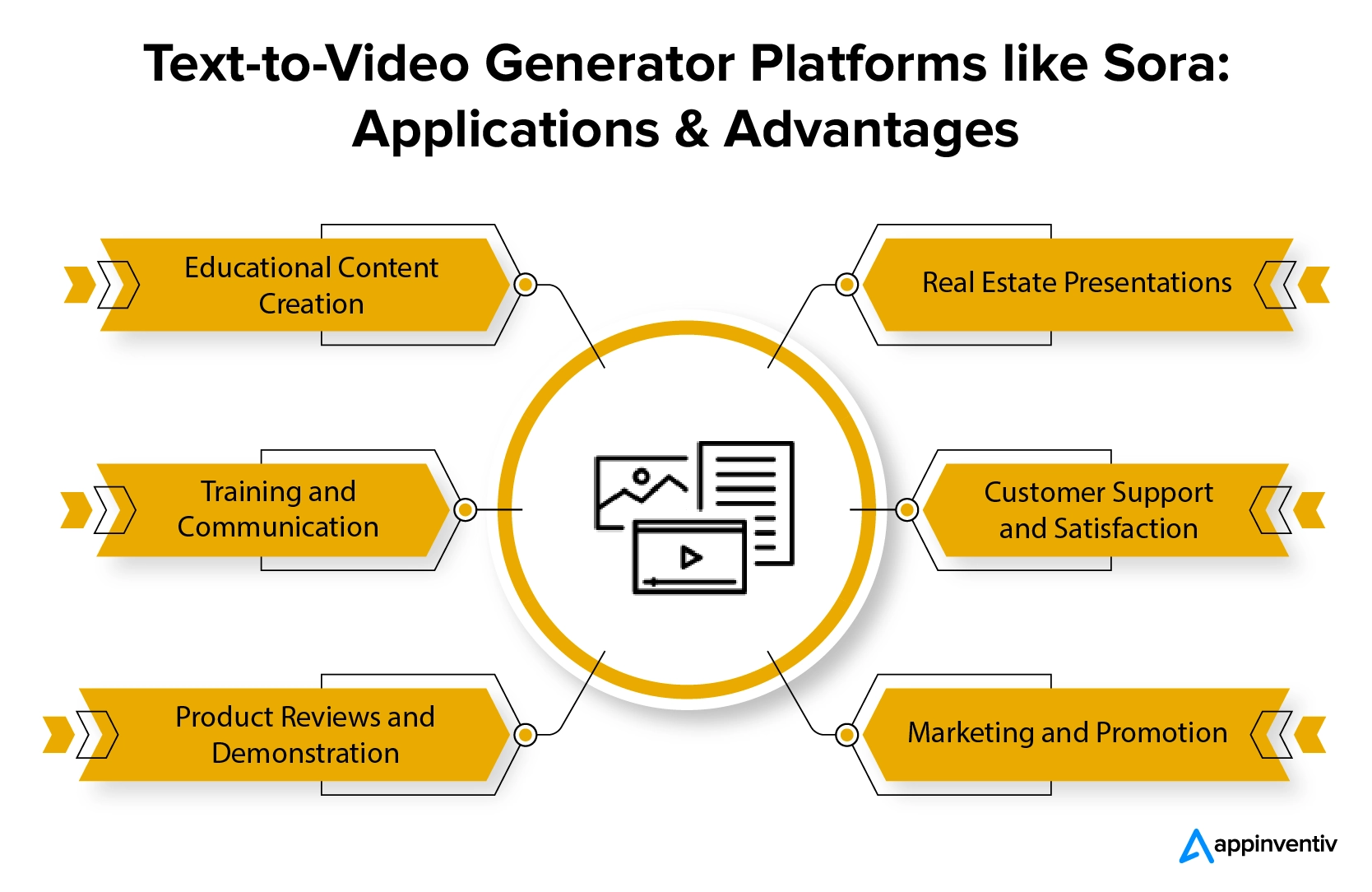
Educational Content Creation
In the education sector, a text-to-video generator like OpenAI Sora can convert written educational material into engaging video lectures, tutorials, quizzes, or presentations. This facilitates interactive and personalized learning experiences for students, improves comprehension, and fosters knowledge retention.
Also Read: 12 Ways AI in Education is Transforming the Industry
Training and Communication
Businesses across industries can leverage such a platform to create illustrative videos for employees, which can inform them about new techniques, product features, or protection protocols in a captivating and engaging manner. By converting training manuals, policy documents, or internal communications into video format, employees can access information more efficiently, leading to increased productivity and collaboration.
Product Reviews and Demonstration
In the retail and eCommerce industry, the ability to automatically generate product reviews or demonstration videos from text descriptions can greatly enhance users’ shopping experience. This visual representation helps consumers make informed purchasing decisions and reduces the likelihood of returns.
You may like reading: How AI is Improving the Retail Shopping Experiences
Real Estate Presentations
Real estate agents can utilize an AI-driven text-to-video app to create virtual property tours or showcase listings through immersive video content. This enables potential investors to explore properties remotely, saving time for both buyers and agents and increasing the likelihood of successful transactions.
Also Read: Benefits, Use Cases, and Examples of AI in Real Estate
Customer Support and Satisfaction
By converting long textual guides or FAQs into video tutorials, companies can improve the efficiency of their customer support teams. Visual instructions are often more effective in guiding users through complex processes, reducing the need for direct assistance and enhancing customer satisfaction.
You may like reading: How to create an AI-powered customer service platform like Zendesk?
Marketing and Promotion
An AI platform like Sora can automate the process of converting text-based marketing content into visually appealing videos. This enables marketers to quickly generate engaging promotional material for products or services, enhancing brand visibility and driving customer engagement. Also, social media managers can leverage such platforms to create video content of different lengths for various social media platforms like TikTok, Facebook, Instagram, etc.
How to Develop a Text-to-Video Generator Platform like Sora?
Developing a text-to-video generator platform like Sora is a multistep process that involves integrating advanced technologies and methodologies. Below are the key steps to guide you through the text-to-video app development process:
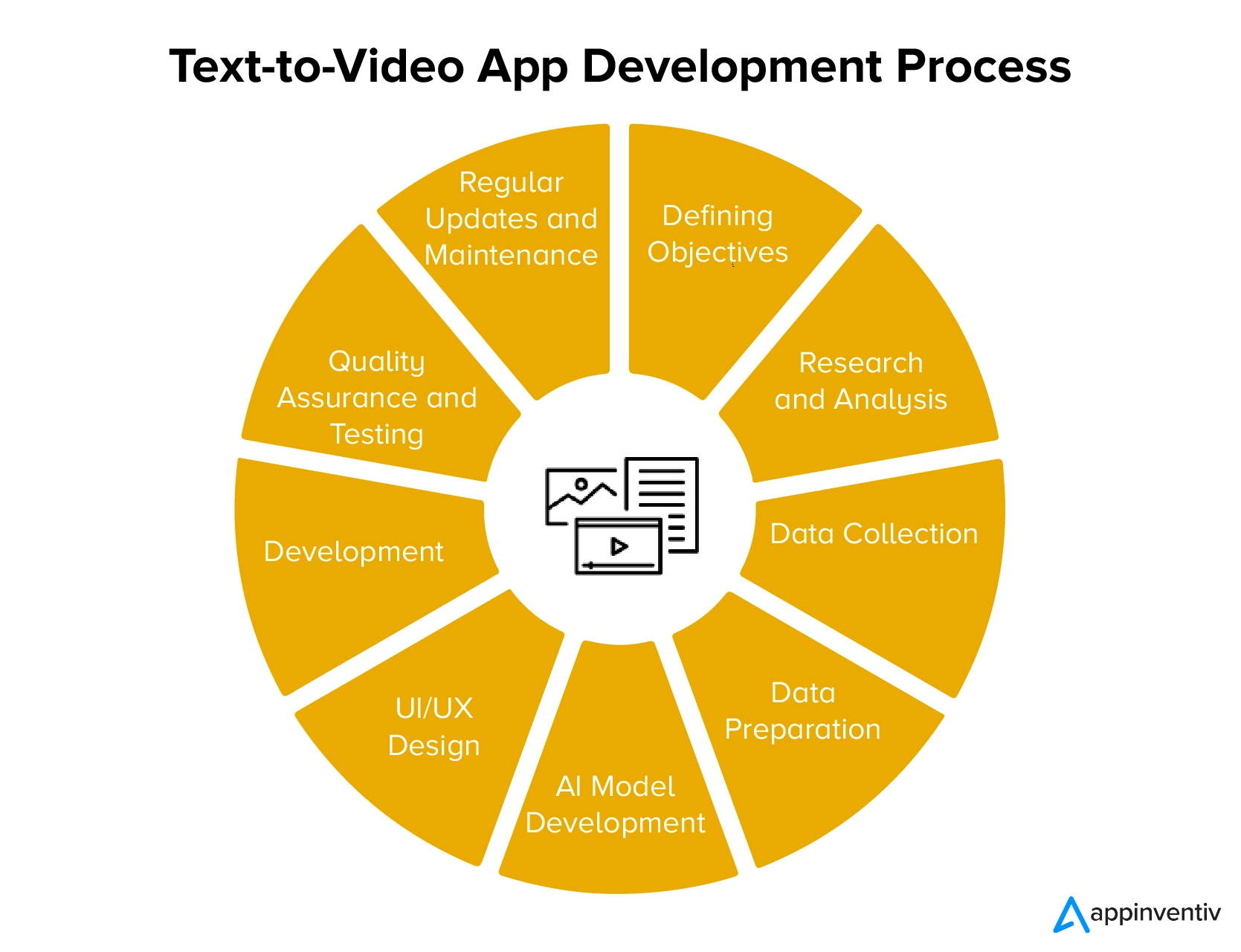
Defining Objectives
The first step in the text-to-video app development process starts with defining the purpose of the app, the target audience, and the key features you want to include. Whether it is for marketing, education, or entertainment, having a clear objective will streamline the development process.
Research and Analysis
The next step is to conduct thorough research and analysis to understand user needs, market trends, and competitor offerings. Identify potential challenges and opportunities in the text-to-video app market to plan your development strategy.
Data Collection
Gather a diverse and comprehensive dataset of text and corresponding video or image pairs. Ensure that the dataset covers a wide range of topics, styles, and scenarios to train the AI model effectively.
Data Preparation
Preprocess the collected data to ensure consistency and quality. This may involve cleaning and formatting the text data, aligning it with the corresponding video or image data, and augmenting the dataset to enhance diversity and robustness.
AI Model Development
Choose suitable AI techniques and architectures for text-to-video-ai-generation, such as generative adversarial networks (GANs), computer vision, natural language processing, recurrent neural networks (RNNs), or transformer models. Train the AI model on the prepared dataset, fine-tuning its parameters to optimize performance and accuracy.
UI/UX Design
Once objectives are defined and research is complete, proceed with the designing phase. It involves designing an intuitive and visually appealing user interface (UI) that enhances the user experience (UX) of your text-to-video app. Create wireframes and prototypes to visualize the app’s layout, navigation flow, and visual elements.
Development
Now, it is time for the actual step of bringing your product idea to life. At this stage, your AI development team builds the backend infrastructure, algorithms, and frontend components of the app. They further implement features such as text parsing, video generation, and user authentication as per the project requirements.
Quality Assurance and Testing
The next vital step is iterative testing and quality assurance to fix bugs and glitches, ensuring the uninterrupted app’s functionality across different platforms. After thorough testing and quality assurance, it is time to deploy your product to the targeted platform and bring it for end-user needs.
Regular Updates and Maintenance
Post-launch support and ongoing maintenance are vital aspects of the text-to-video app development process. It involves fixing bugs, enhancing features, maintaining servers, and releasing regular software updates by continuously monitoring the app for performance, security, and user experience.
Also read: What is the Cost of Maintaining an App in 2024?
8 Real-World Examples of AI Video Generators like Sora
In the table below, we have compiled a list of the top popular AI video generators of all time, which will help you get an in-depth understanding of what are the core capabilities of Sora-like platforms and how building a similar solution can help you elevate your content creation game.
| Platform Name | Key Capabilities |
|---|---|
| Synthesia | Specializes in generating videos featuring AI avatars speaking any language. |
| AI Studios | Known for exceptional text-to-speech quality |
| InVideo | Brings text to life in HD video formats from premade templates. |
| Meta AI’s Make-a-Video | An open-source platform for creating high-quality videos from text |
| Lumen5 | Best known for transforming blog posts, news articles, or documents into captivating videos |
| Elai.io | Blends video generation with animated avatars while transforming written content into narrated videos |
| Pictory AI | Create engaging videos from text with pre-designed templates. |
| Fliki | Stands out for combining text-to-video AI and text-to-speech AI capabilities |
How to Make Money with a Text-to-Video Generator like Sora?
There are various ways a text-to-video generator like OpenAI’s Sora can help businesses make money. Some of the most common monetization strategies associated with Sora-like app development are listed below:
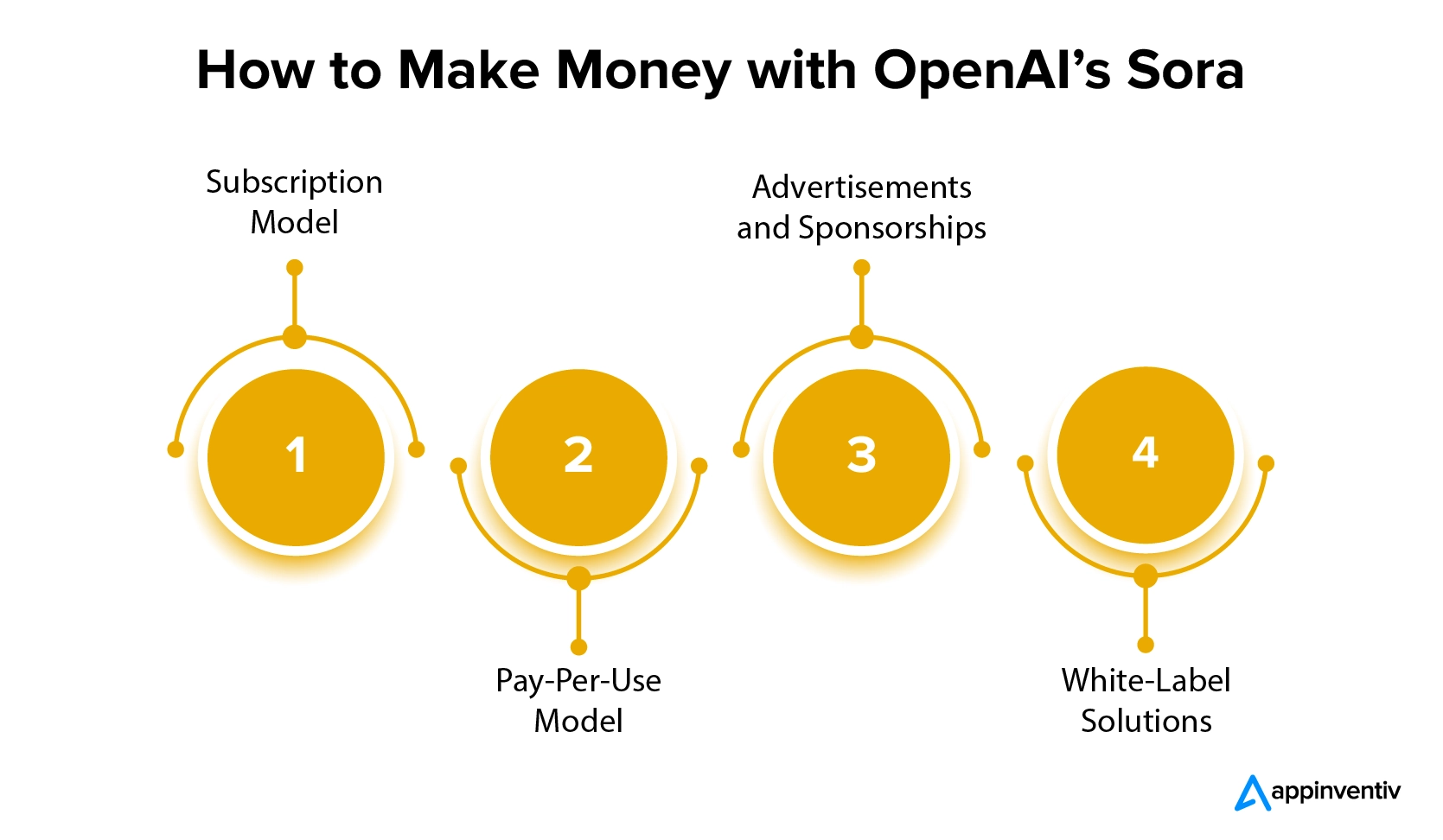
Subscription Model
Offer subscription plans with tiered pricing based on features and usage limits. Users pay a recurring fee to access the platform and generate videos.
Pay-Per-Use Model
Implement a pay-per-use model where users are charged based on the number of videos generated or the duration of video output. For instance, if Sora allows users to create up to 10 minutes of video daily, equating to 600 seconds, it may result in a monthly subscription cost of $6000.
Advertisements and Sponsorships
Monetize the platform through advertisements, sponsorships, or partnerships with brands looking to reach users engaged in video creation.
White-Label Solutions
License the platform to businesses or agencies looking to integrate text-to-video capabilities into their own platforms or services.
You may like reading: The Good, Bad & Ugly of White Label App Development
Develop a Text-to-Video Platform like SORA with Appinventiv
According to a report by Wyzowl, video is a significant marketing tool in today’s digital landscape, used by over 90% of businesses. And this adoption rate looks to expand in coming years as almost 70% of non-users are planning to embrace video marketing in 2024. For the remaining 30% of non-video marketers, lack of time presents a formidable barrier.
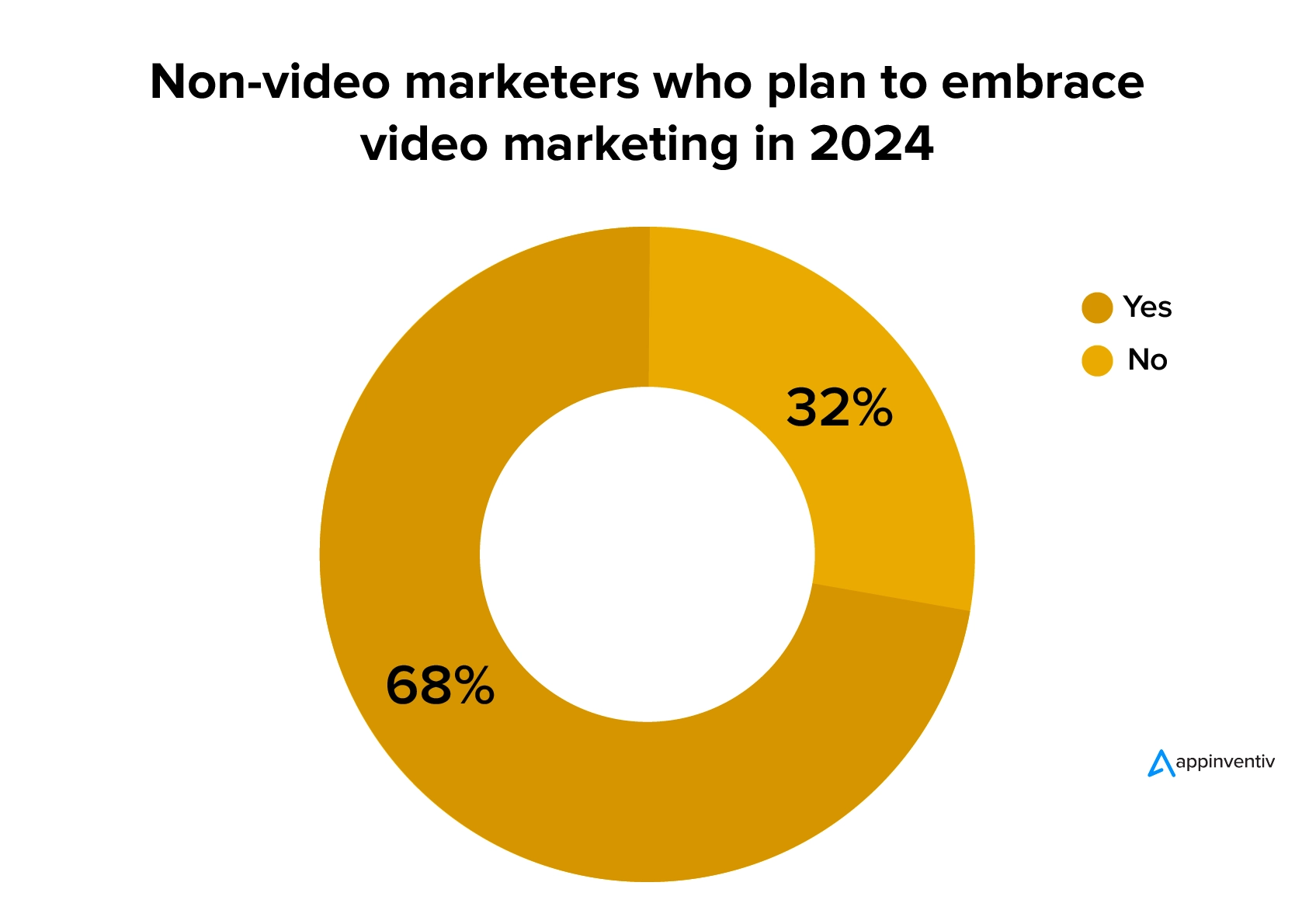
Undoubtedly, a text-to-video app like Sora will change the way businesses create content, resolve the obstacles of time constraints, and improve its adoption rate. Whether you need to launch a product, inform the audience about a company update, introduce a new business idea, or add new features to the current product, such AI platforms will make it easier and quicker for companies to create dynamic content in a desirable format.
So, no matter whether you are a huge enterprise or an emerging startup, if you are looking to leverage the next-gen text-to-video model like Sora to advance your video marketing game, then now is the best time to act.
Partner with a reputed artificial intelligence software development company like Appinventiv to build a platform like Sora. With our team of 1500+ tech professionals and experience in delivering 3000+ successful projects, including Vyrb, YouComm, JobGet, and Mudra, we can be your trusted tech partner for text-to-video app development.
Contact our AI developers today to know the cost to develop an AI platform like Sora and embark on the development journey with confidence.
FAQs
Q. How much does text-to-video generator development cost?
A. The cost to develop an AI platform like Sora can vary widely depending on various factors (details mentioned above), including the platform’s complexity, features, technology stack, and development team location.
On average, the cost to build an AI Platform like Sora can range between $30,000 and $300,000 or more. To get a more precise estimate, discuss your project idea with our efficient AI developers.
Q. How long does it take to develop a platform like Open AI Sora?
A. The time it takes to build a platform like Sora can vary significantly depending on factors such as project scope, complexity, available resources, and experience of the AI development company.
Generally, developing an AI platform like Sora may take four months to a year or more, depending on the complexity of the research, development, testing, and refinement phases. Connect with us to get a more definite timeline for text-to-video app development.
Q. What are the benefits of developing a text-to-video generator?
A. Developing an AI platform like Sora offers numerous advantages across industries. Here are some of the most notable benefits of a text-to-video generator:
Efficiency: Automation of the content creation process saves time and resources, allowing businesses to produce high-quality video content in a jiffy.
Time and Cost Efficiency: Automating video creation from text reduces the need for manual labor, saving time, money, and resources compared to manual video production.
Scalability: Text-to-video generators can handle a large volume of content generation requests, making them suitable for businesses of all sizes.
Personalization: Customizing videos based on text input allows for personalized content tailored to individual preferences.
Versatility: Text-to-video generators can be leveraged across industries for various purposes, from marketing and education to entertainment and communication and beyond.
Innovation: Embracing text-to-video technology demonstrates a commitment to innovation, positioning businesses as leaders in their respective industries.
Competitive Advantage: The ability to quickly generate high-quality video content gives businesses a competitive edge in the market, attracting more customers and driving revenue growth.



How Much Does It Cost to Build an AI Trading App Like Moomoo?
Trading apps have undoubtedly solved the major pain point of the public - eliminating middlemen from investing their money, Which keeps them in fear that they might get cheated or lose their money. However, trading apps have facilitated users with the transparency to perform trading safely and swiftly. In the era of smartphones and AI,…
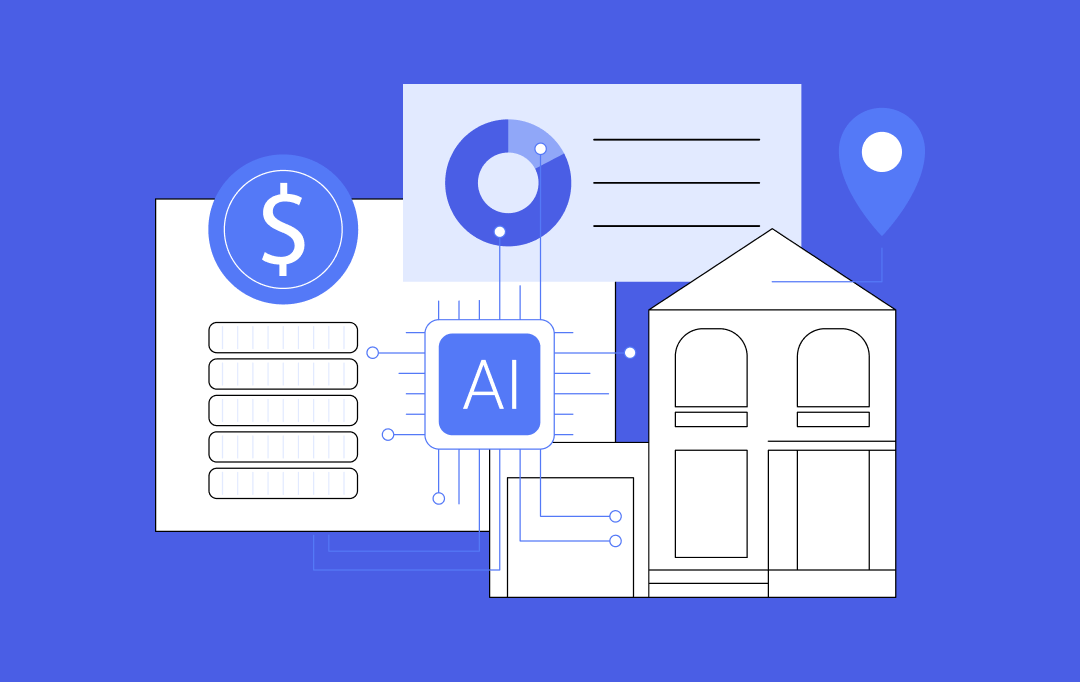
15 Explorative Use Cases of AI in Mortgage Lending
In an era where technological advancements are revolutionizing every sector, mortgage lending has been slow to embrace change. The industry has been bogged down by outdated processes, increasing operational costs, and regulatory pressures. However, with the introduction of AI in mortgage lending industry, a shift is occurring that promises to address these pain points while…

How to Develop AI Medical Transcription Software? Costs, Process, and Benefits
Developing accurate and efficient medical transcriptions manually has always been a painstaking process, fraught with many challenges. Manual transcription often leads to errors, misinterpretations, delayed patient care, and the high costs associated with hiring skilled professionals. As the volume of medical data grows, the pressure to maintain accuracy without compromising efficiency intensifies. It's time to…







